Regions of Turkey

Standing where Asia, Africa, and Europe reach for one another, Turkey (Türkiye) guarantees a distinguished voyage with its seven exceptional regions – each unique and phenomenal with their cuisine, architecture, culture, landmarks, and attractions shaped by the extraordinary history, geography, and climate.
From the windswept plateaus of Anatolia – also known as Asia Minor – to the turquoise waters of the Turkish Riviera, regions of Turkey deliver varied experiences, recollecting memories of civilisations of olden times. The emerald valleys of the Black Sea region (Karadeniz Bölgesi), where the ancient ruins are deployed, are additionally wrapped in the scent of mulberry trees and tea-covered hills. The Marmara and Thrace region (Marmara ve Trakya Bölgesi) is dotted with archaeological areas, seaside towns, and fertile lands where olive trees and vineyards flourish.
Once a key artery of the legendary Silk Road, Turkey remains a crossroads of trade and culture, where once caravans journeyed in the historic bazaars and cities of a bygone era. In this vast land where continents and cultures meet, the rocky hills of the east and the sunlit coasts of the west, ancient ruins and modern cities are worlds of their own, rising with an unbroken history.
Aegean Region
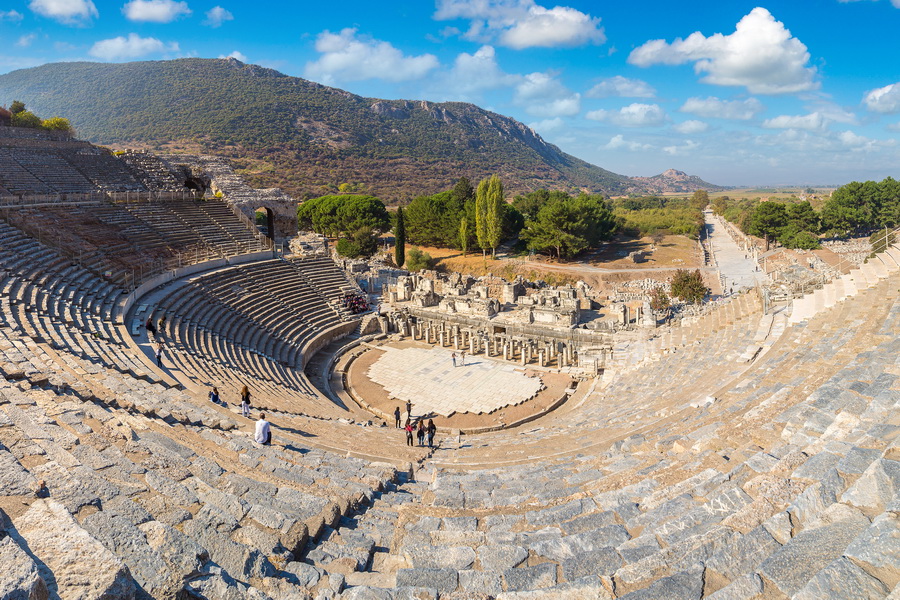
Largest сity: Izmir, UNESCO-listed World Heritage
Population: Approximately 10 million
The Aegean Region (Ege Bölgesi) is spread along the coastline of turquoise waves and golden sands. Herodotus once claimed it features "the most beautiful sky and the best climate in the world", and who could argue? From the historic ruins of Troy (Troya) and Pergamum to the grand streets of Ephesus (Efes) where philosophers once roamed, the past remains in every corner. Izmir, Türkiye’s third-largest city, unites modern boulevards with ancient bazaars, while Çeşme glistens with thermal springs and sunlit shores. Southward, Bodrum – home of Herodotus and the legendary Mausoleum – leads to Marmaris and Fethiye, where pine-clothed mountains embrace crystalline waters.
Inland, Pamukkale’s almost surreal white terraces spill from the ruins of Hierapolis, a natural healing wonder preserved by time. Not far, Aydın – the land of figs and ancient cities – holds treasures such as Aphrodisias, one of the finest Greco-Roman ruins. Neighbouring Muğla, with its charming Ottoman-era old town and stone-paved streets, stands as a gateway to the region’s stunning coastline. Further northeast, Kütahya, a UNESCO-listed Creative City of Crafts and Folk Art, displays the legacy of ceramic masters and Ottoman tilework, while Afyonkarahisar, recognised for its UNESCO-listed gastronomy, lures visitors with its legendary kaymak, sucuk, and thermal springs.
The Aegean is a place full of history, art, and old sailing stories, connecting the past to today. From Homer’s ancient poems to modern marinas, the region delivers both the excitement of Blue Voyage and a great opportunity to explore historical sites.
Spring (April to June) and autumn (September to November) are the best times to visit the Aegean Region. These months bring pleasant temperatures, making it ideal for exploring historical sites, hiking in the hills, and enjoying the coastal breeze. Summer is hot and vivacious, perfect for those looking to sunbathe on the beaches but crowded with tourists. Winters are mild but can be rainy, attracting those who prefer quieter, off-season travel.
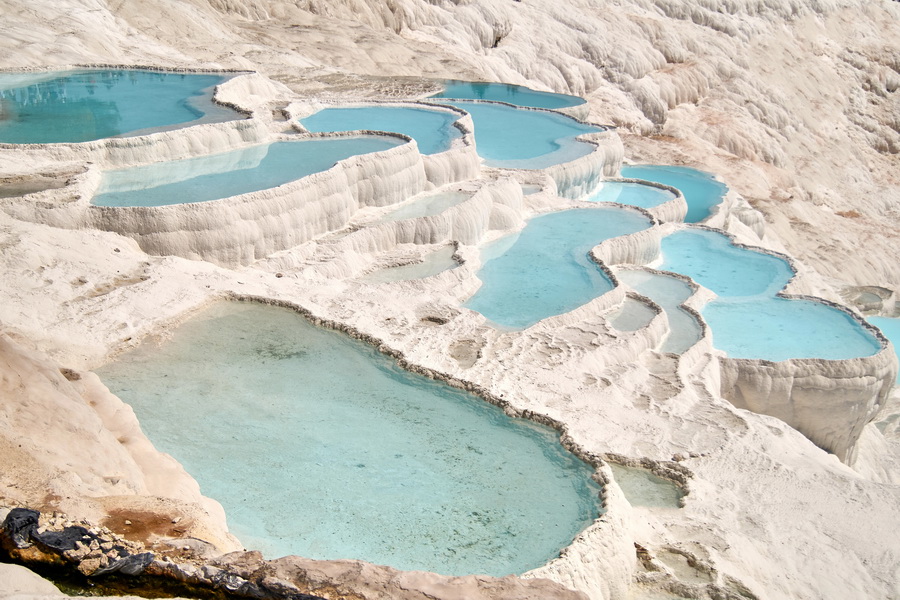
Top places to visit:
- Ephesus (Izmir Province) – One of the best-preserved ancient cities in the world, home to the Library of Celsus and the Temple of Artemis.
- Pamukkale & Hierapolis (Denizli Province) – Almost a surreal landscape of white travertine terraces and ancient ruins, a UNESCO World Heritage Site.
- Bodrum Castle & Museum of Underwater Archaeology (Muğla Province) – A mediaeval fortress overlooking the Aegean, filled with maritime artefacts.
- Alaçatı (Izmir Province) – A charming coastal town known for its stone houses, windmills, and café culture.
- Pergamon (Izmir Province) – The ruins of an ancient city featuring a steeply tiered amphitheatre and the Altar of Zeus.
- Izmir’s Kemeraltı Bazaar – A historic marketplace with winding alleys, tea gardens, and Ottoman-era architecture.
- Kuşadası & Dilek Peninsula National Park (Aydın Province) – A mix of resort town energy and untouched nature with scenic beaches.
- Çeşme Castle (İzmir Province) – A well-preserved Ottoman fortress with panoramic sea views.
- Assos (Çanakkale Province) – Ancient Greek city on Turkey’s Aegean coast nowadays known as Behramkale, famed for Aristotle’s academy, the Temple of Athena, and its historic harbour. Later a Roman and Byzantine site, now a tourist retreat amid ruins.
Black Sea Region
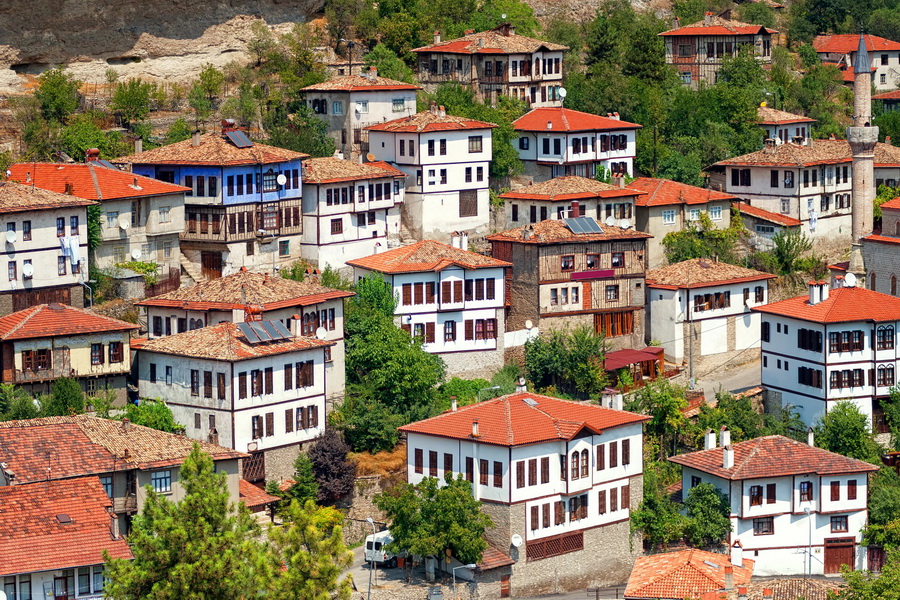
Largest сity: Samsun, starting point of the Turkish War of Independence
Population: Approximately 7.5 million
Green, verdant, and shaped by the cool waters of the Black Sea, this region is distinct from the rest of Turkey. Colossal peaks run parallel to the coastline, while tea plantations, hazelnut orchards, tobacco fields, and corn farms define its landscape. Also called Pontus, here heavy rainfall fuels its agriculture, positioning farming as the primary industry. The culture, dialect, and food are unique, influenced by both Anatolian and Caucasian traditions. A winding coastal road stretches from Istanbul’s eastern outskirts to the Georgian border, passing through exuberant port cities and quiet mountain villages.
The best time to visit the Black Sea Region in Turkey is between late spring and early autumn, from May to September. Summers are balmy, with delightful heat and lush greenery, making it ideal to explore coastal towns, highland plateaus, and historic sites. Winters can be harsh, particularly in the mountainous interior, but the coastal areas remain accessible year-round.
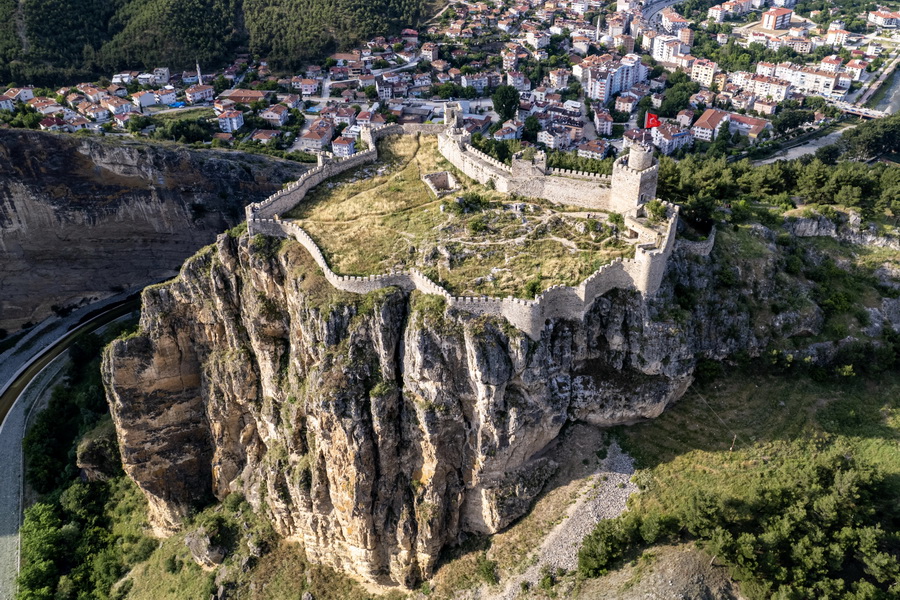
Top places to visit:
- Sumela Monastery (Trabzon Province) – A 14th-century Greek Orthodox monastery built into a pompous cliffside with startling views of Altındere Valley.
- Ayasofya Museum (Trabzon) – A former Byzantine church with awe-inspiring frescoes and baffling stone reliefs.
- Safranbolu (Karabük Province) – A UNESCO-listed Ottoman town with well-preserved wooden mansions and cobblestone streets.
- Uzungöl (Trabzon Province) – An idyllic lake surrounded by alpine-style houses and misty forests.
- Sinop Castle (Sinop) – A fortress with a history of more than 2,000 years, overlooking the Black Sea.
- Rize Tea Plantations (Rize Province) – The heart of Turkey’s tea industry, with terraced plantations and scenic views with tea-tasting experiences.
- Giresun Island (Giresun) – The only Turkish island in the Black Sea, linked to ancient Amazon warrior legends.
- Amasya – A city with rock-cut tombs of Pontic kings and Ottoman-era mansions along the Yeşilırmak River.
Central Anatolia Region
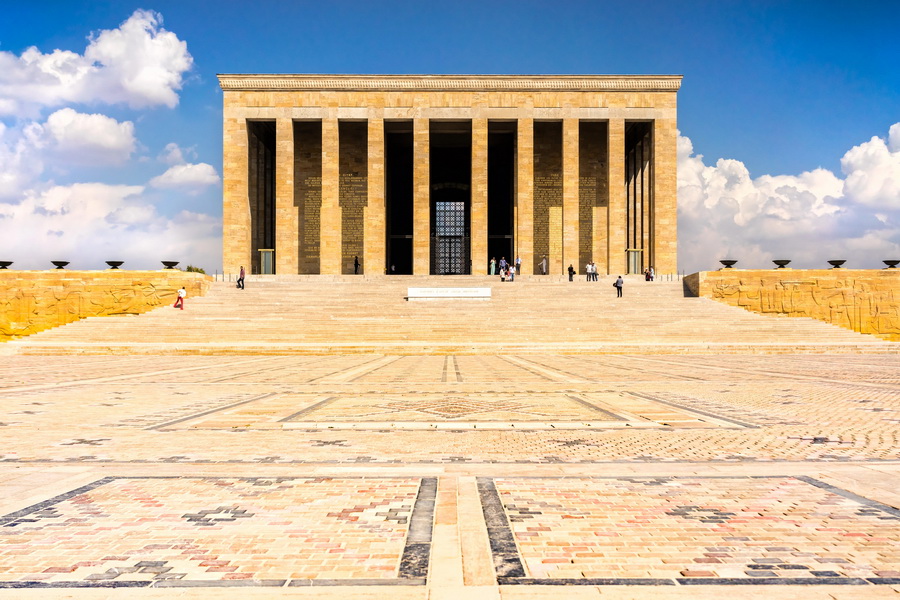
Largest сity: Ankara, Capital of Turkey
Population: Approximately 13 million
Central Anatolia (İç Anadolu Bölgesi) is the historical and geographical heart of Turkey, where ancient civilisations left their mark on the stark yet enchanting landscape. One of the landmarks of contemporary Turkish cinema, Once Upon a Time in Anatolia is set “in the eerie expanse of the Anatolian steppe: the plain where Asia reaches west into Iran, Armenia, and Turkey” (The Guardian).
Home to the magical Cappadocia, the region features vast steppes, rocky plateaus, and deep valleys that explain the region, punctuated by salt lakes and extinct volcanoes. This is where history and modernity collide – Ankara, the capital, embodies the republic’s forward momentum, while places like Hattusa, Gordion, and Çatalhöyük stand as witnesses of the past empires and lost worlds. The region's climate is continental, meaning hot summers and cold, snowy winters, which shaped the powerful cultures that have blossomed here for thousands of years.
Spring (April–June) and autumn (September–November) are the best times to visit the Central Anatolia Region, allowing you to explore the region's archaeological sites and cultural landmarks without the extremes of summer heat or winter chill. Konya’s Mevlana Festival in December is also an unmissable experience, commemorating the spiritual traditions of the Whirling Dervish dances.

Top places to visit:
- Anıtkabir (Ankara) – The mausoleum of Mustafa Kemal Atatürk, founder of the Turkish Republic, is a national symbol and a masterpiece of modern architecture.
- Museum of Anatolian Civilisations (Ankara) – A world-class museum displaying artefacts from prehistoric times to the Ottoman era, housed in a beautifully restored caravanserai.
- Hattusa (Çorum Province) – The ruins of the Hittite capital, with its massive fortifications, Lion’s Gate, and the open-air sacred place of Yazılıkaya, featuring detailed rock carvings of ancient gods.
- Gordion (Polatlı, Ankara Province) – Home to the legendary King Midas and the site where Alexander the Great cut the famous Gordian Knot, symbolising his destiny to rule Asia.
- Çatalhöyük (Konya Province) – One of the oldest known cities in the world, dating back to 7500 BC, with remarkably preserved Neolithic murals and an early example of urban planning.
- Mevlâna Museum & Tomb (Konya) – The resting place of Rumi, the great Sufi mystic and poet, whose philosophy of love and unity still inspires people worldwide.
- Cappadocia (Nevşehir, Aksaray, Kayseri, Niğde) – An otherworldly landscape of fairy chimneys, underground cities, and rock-cut churches, best explored by hot air balloon at sunrise.
- Eskişehir – A lively university city known for its Odunpazarı district’s colourful Ottoman houses, modern art museums, and the legacy of Yunus Emre, one of Turkey’s most beloved poets.
- Kırşehir – Known for its deep-rooted folk music tradition and recognised by UNESCO as a Creative City of Music. It’s a place where musicians still play bozlak songs, keeping old Anatolian sounds alive.
Eastern Anatolia Region
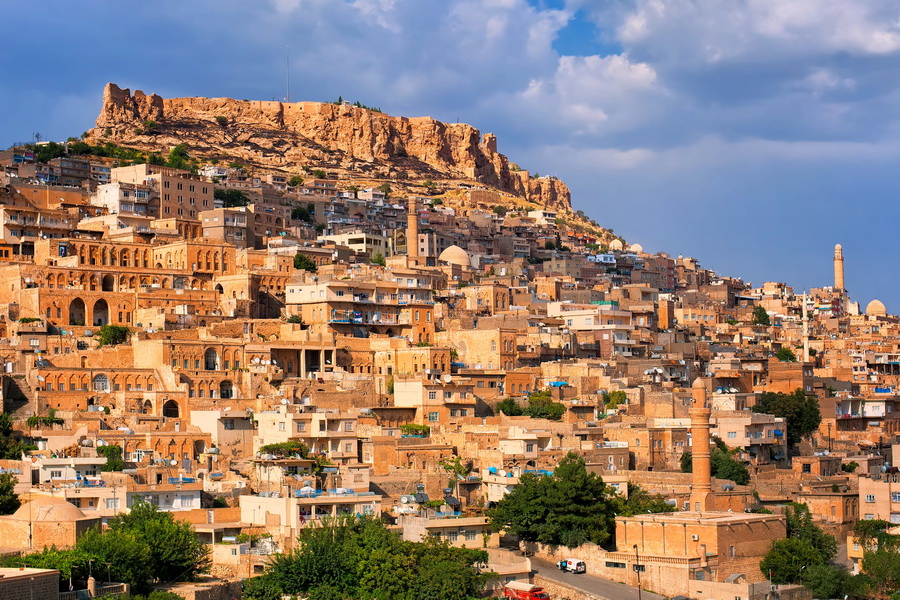
Largest сity: Erzurum, UNESCO-listed World Heritage Sites
Population: Approximately 6.5 million
Eastern Anatolia (Doğu Anadolu Bölgesi) is Turkey’s most rugged and remote region, defined by its gliding mountain ranges, deep valleys, and untouched lakes. The landscape is shaped by ancient volcanic activity, including Mount Ararat, the country’s highest peak at 5,165 metres, long associated with the legend of Noah’s Ark. The climate is tough, with bitterly cold winters and warm summers, making it one of the least densely populated parts of Turkey. Despite its challenges, Eastern Anatolia holds a tremendous historical and cultural wealth, from the ruins of Ani to the mediaeval mosques of Erzurum and the Urartian heritage of Van.
Spring (April–June) and autumn (September–November) are the best times to explore the Eastern Anatolia Region, with its pleasant temperatures and stunning natural scenery. Winter is ideal for those seeking adventure, as Erzurum’s Palandöken is one of Turkey’s top skiing destinations.
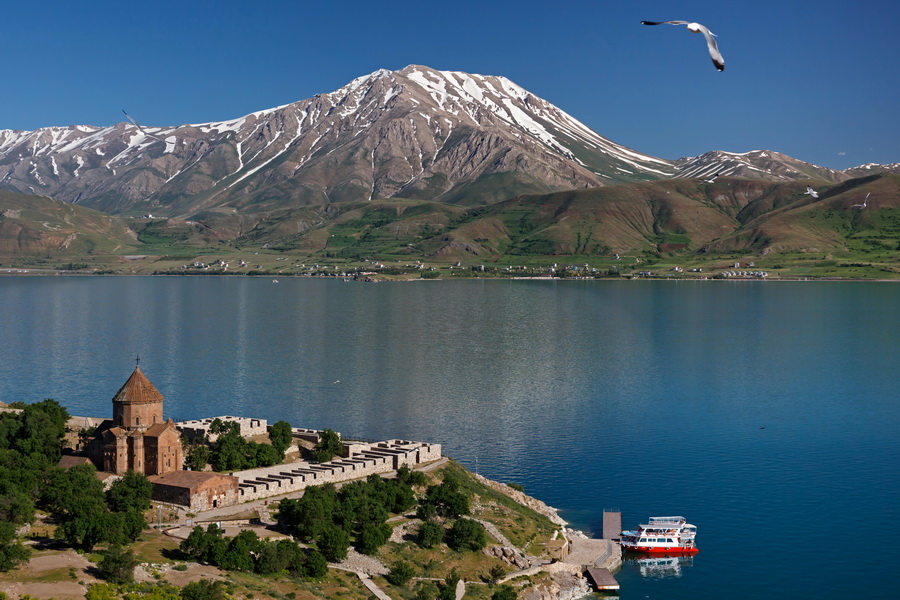
Top places to visit:
- Mount Ararat (Ağrı Province) – A majestic and mystical peak, believed to be the resting place of Noah’s Ark, attracting climbers and spiritual seekers alike.
- Ani Ruins (Kars Province) – The hauntingly beautiful remains of a mediaeval Armenian capital, once known as the ‘City of a Thousand and One Churches’.
- Lake Van & Akdamar Island (Van Province) – Turkey’s largest lake, famous for its uncanny blue waters and the island’s 10th-century Armenian Church of the Holy Cross.
- Nemrut Crater Lake (Bitlis Province) – A hidden natural wonder inside a volcanic crater, with hot and cold lakes surrounded by prodigious cliffs.
- Van Castle & Urartian Ruins (Van Province) – A fortress overlooking Lake Van, built by the Urartians in the 9th century BC.
- Mardin – A striking hilltop city with ancient stone houses and monasteries and the surrounding Mesopotamian plains.
Mediterranean Region
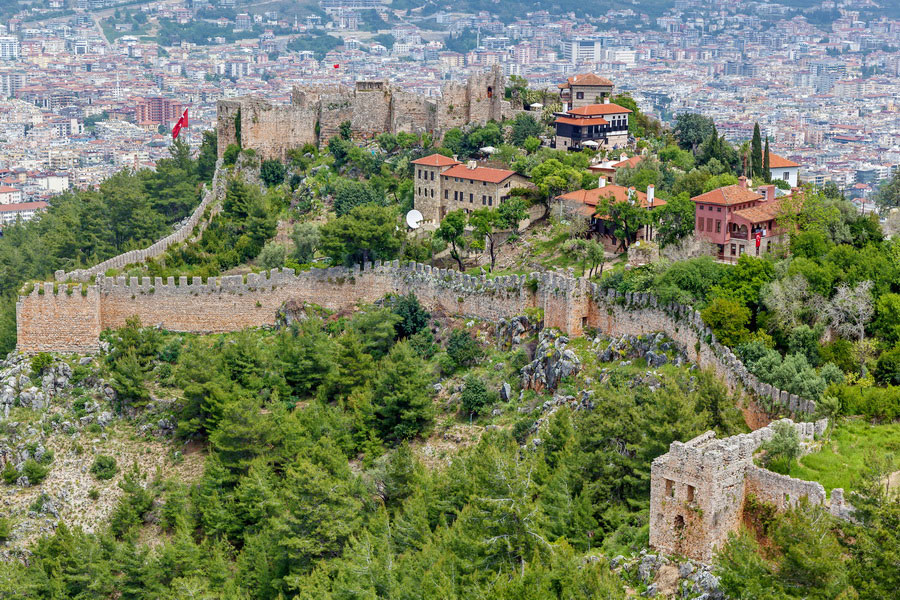
Largest сity: Antalya, UNESCO-listed World Heritage Sites
Population: Approximately 10.5 million
South of the towering Taurus Mountains (Toros Dağları), the Mediterranean coastline is dotted with golden beaches, rich agricultural lands, dynamic coastal cities, and ancient ruins nestled among pine forests, citrus groves, and Turkey’s capital of tourism, Antalya. With sunshine for 300 days a year, this region is a paradise for swimming, sunbathing, yacht tourism, luxury hotels, and watersports, making it one of the best holiday destinations around the globe, also during Ramadan.
Its history and traditions are laced into the mythologies of ancient civilisations, from the mountain strongholds of Lycia to the sunken cities of Kekova, forming a unique region and the best tourist destination.
The best time to visit the Mediterranean region in Turkey (Akdeniz Bölgesi) is spring (April–June) and autumn (September–November) because of its warm weather without the peak summer crowds. Winter is warm compared to other parts of Turkey, providing a serene space to enjoy nature and history without the rush of tourists, though during the summer the region is at its peak for adventure seekers and party people.
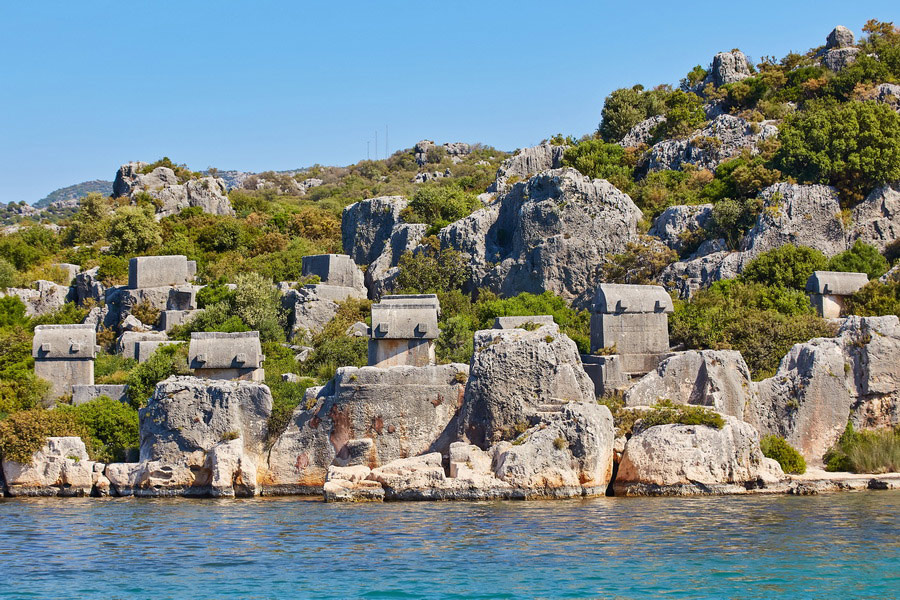
- Antalya – The heart of the Turkish Riviera, a city of palm-lined boulevards, coastal promenades, and lively nightlife. Highlights include the old town of Kaleiçi, Konyaaltı and Lara beaches, and the iconic Yivli Minaret Mosque.
- Perge, Aspendos & Side (Antalya Province) – Three of the most significant ancient cities in Pamphylia, featuring well-preserved theatres, colonnaded streets, and grand temples overlooking the sea.
- Kekova & Simena (Antalya Province) – A mesmerising stretch of coastline with a sunken Lycian city beneath crystal-clear waters, best explored by boat.
- Kaş – A charming coastal town known for its boutique hotels, diving spots, and ancient ruins scattered along the Lycian Way hiking trail.
- Alanya (Antalya Province) – A panoramic port city framed by the Taurus Mountains, giving prominence to the mediaeval Alanya Castle, pristine beaches, and the historic Red Tower.
- Kızkalesi (Mersin Province) – A striking mediaeval castle seemingly floating on the sea, opposite the ancient fortress of Korykos.
- Tarsus (Mersin Province) – The birthplace of Saint Paul, overflowing with Roman and early Christian heritage, ancient streets, and archaeological sites.
- Adana – A modern city with long-standing heritage, home to the grand Sabancı Central Mosque, the ancient Taşköprü bridge, and a renowned culinary scene.
- Hatay – UNESCO-listed Creative City of Gastronomy, is famous for its rich and diverse food culture. Dishes like künefe, tepsi kebabı, and hummus show the region’s excellence of Mediterranean and Middle Eastern flavours.
Southeastern Anatolia Region

Largest сity: Gaziantep, UNESCO-listed Creative City of Gastronomy
Population: Approximately 8.5 million
Marked by mountainous ranges, fertile plains, and the winding paths of the Tigris and Euphrates, Southeastern Anatolia (Güneydoğu Anadolu Bölgesi) stands as one of the oldest inhabited regions in the world. Home to ancient Mesopotamian civilisations, the region is a crossroads of cultures, diverse ethnicities and cultures, and historic cities, where basalt walls and flavours carry centuries-old traditions. The blend of Ottoman, Arabic, Kurdish, and Assyrian influences makes it a discrete and one of the pivotal parts of Turkey.
The best time to visit Southeastern Anatolia is spring (April–May) and autumn (September–October), when the climate is ideal for exploring Mardin’s stone alleys, Diyarbakır’s basalt walls, and Gaziantep’s momentous bazaars, while the air carries the scent of ripening pistachios and simmering spices. In contrast, summers can be scorching, with temperatures soaring beyond 40°C, while winters, though cooler and sometimes rainy, cast a quiet, contemplative mood over the region’s timeless sites.
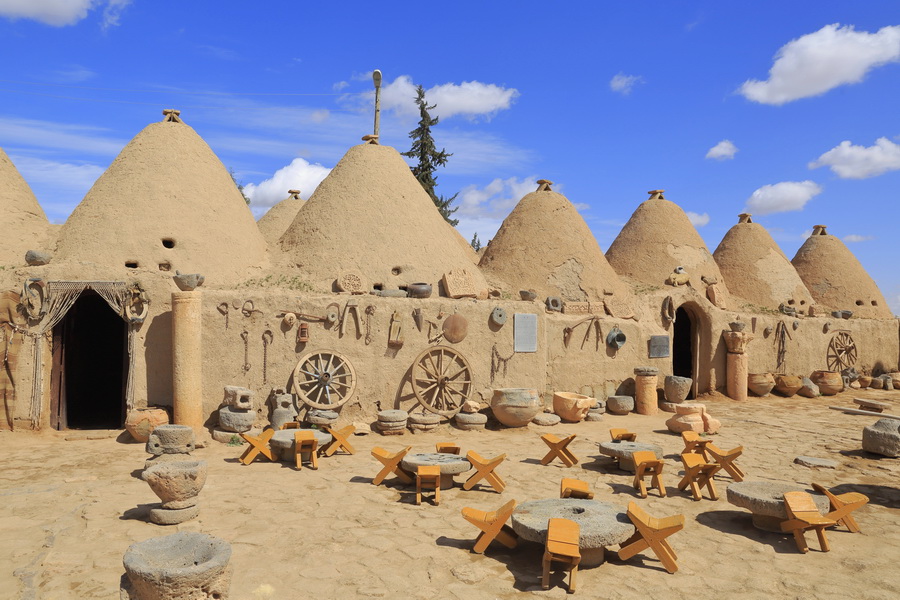
Top places to visit:
- Göbekli Tepe (Şanlıurfa Province) – The world's oldest known temple complex, dating back over 12,000 years, reshaping our understanding of early civilisation.
- Mount Nemrut (Adıyaman Province) – A UNESCO World Heritage site with colossal statues of gods and kings, best experienced at sunrise or sunset.
- Şanlıurfa (Urfa) – A UNESCO-listed Creative City of Music, known as the 'City of Prophets', home to the sacred Balıklıgöl (Pool of Abraham), traditional bazaars, and the historic cave where Abraham is believed to have been born.
- Diyarbakır – Encircled by massive basalt walls, this ancient city boasts the Ulu Cami mosque, vibrant courtyards, and a rich Kurdish heritage.
- Gaziantep – A culinary capital, celebrated for its pistachio-laden baklava, sprawling bazaars, and the Zeugma Mosaic Museum, home to breathtaking Roman-era mosaics.
- Harran (Şanlıurfa Province) – An ancient city with beehive-shaped mud-brick houses, once a major centre of education and astronomy in the Islamic world.
- Halfeti (Şanlıurfa Province) – A partially submerged town on the banks of the Euphrates, where boat tours deliver an additional charm. It is also home to the rare black rose, which blooms in deep crimson before turning almost black.
- Midyat (Mardin Province) – A centre of Assyrian culture, with beautifully preserved stone houses, monasteries, and a deep-rooted legacy of craftsmanship.
Thrace and Marmara Region
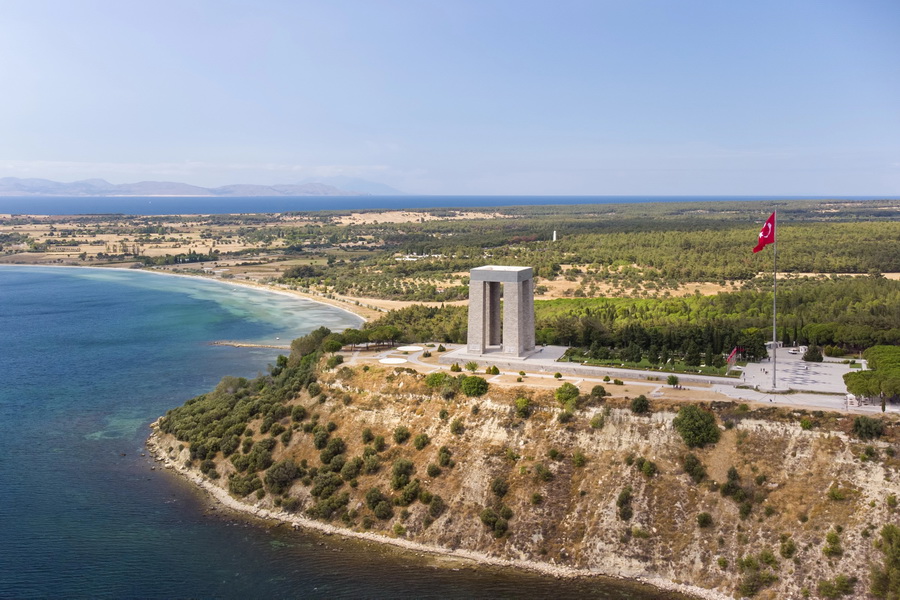
Largest сity: Istanbul, UNESCO-listed Historic Areas and UNESCO-listed Creative City of Design
Population: Approximately 27 million
Divided from the rest of Anatolia by the Bosphorus, the Sea of Marmara, and the Dardanelles Strait, the Thrace and the Marmara region bridges Europe and Asia, holding Istanbul in its heart and embracing serene beaches and vineyards, coastal fortress towns, thick ramparts and round towers, Byzantine city walls, unmatched culinary heritage, grand bazaars, historic caravanserais, and massive Ottoman-era bridges, shaping one of the most extraordinary destinations around the globe.
From the rolling sunflower and lavender fields of Edirne to the dynamic industrial centres of Kocaeli and Bursa, the UNESCO-listed Creative City of Crafts and Folk Art, this region has been the backdrop of pivotal historical moments, from ancient Persian campaigns to the Gallipoli battles of World War I. The cities of Balıkesir, Bilecik, Bursa, Çanakkale, Edirne, Istanbul, Kırklareli, Kocaeli, Sakarya, Tekirdağ, and Yalova define its diverse geography and cultural intensity.
The best time to visit Thrace and the Marmara Region is spring (April to June) and autumn (September to November), when mild temperatures around 23°C create the perfect setting to discover Edirne, Bursa, and Çanakkale or enjoy the coastal towns along the Marmara Sea. These seasons bring a balance of pleasant weather and fewer crowds, making landmarks, vineyards, and nature trails all the more inviting. In summer, the region’s seaside escapes come to life, while winter (November to March) transforms Uludağ and Kartepe into the country’s top winter sports destinations. In Istanbul, Christmas decorations light up shopping streets, and New Year's Eve brings fireworks over the Bosphorus, lively celebrations and festive markets.
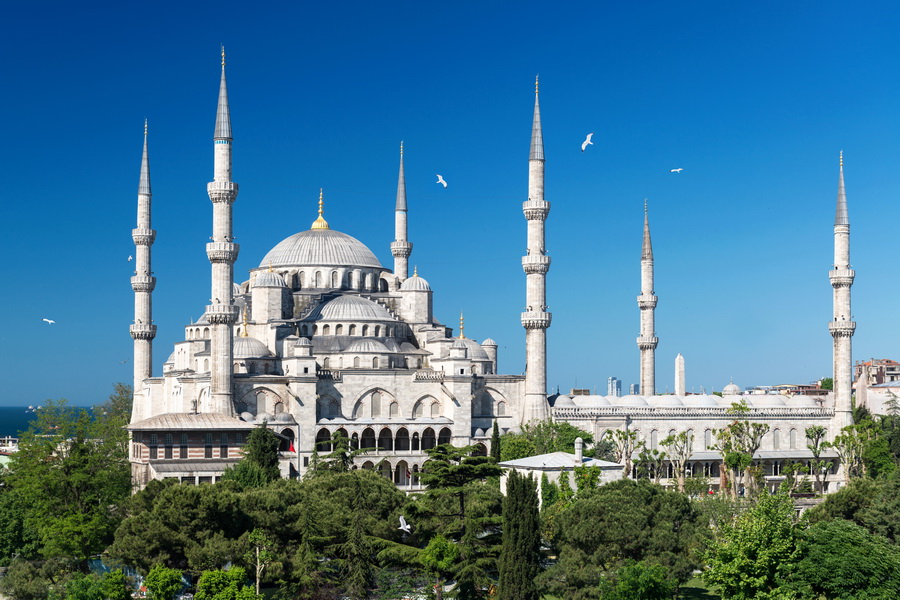
Top places to visit:
- Istanbul – The city where continents meet, a living museum of empires, architectural marvels like Hagia Sophia (Ayasofya), Topkapı Palace (Topkapı Sarayı), and the Blue Mosque (Sultan Ahmet Camii), alongside humming markets, historical hammams, and a cosmopolitan atmosphere.
- Edirne – A former Ottoman capital known for the majestic Selimiye Mosque, designed by Mimar Sinan, as well as its historic bridges, lively bazaars, and the annual Kırkpınar oil wrestling festival.
- Çanakkale & Gallipoli (Çanakkale Province) – A city of history, from the ancient ruins of Troy to the poignant Gallipoli battlefields, where visitors pay homage to those who fought in World War I.
- Bursa – The cradle of the Ottoman Empire, famous for its grand mosques, traditional silk production, thermal baths, and the ski slopes of Uludağ.
- Iznik (Nicaea, Bursa Province) – An ancient city celebrated for its Byzantine heritage and exquisite Ottoman-era ceramics, still handcrafted today.
- Kırklareli – A gateway to the Strandzha Mountains, with charming villages, lush forests, and a Thracian past.
- Yalova – A seaside town famed for its rejuvenating thermal springs and tranquil coastline.
- Gönen & Manyas (Balıkesir Province) – Home to Turkey’s famous thermal waters and the Kuşcenneti National Park, a shelter for migratory birds along the shores of Lake Manyas.
- Marmara Islands (Balıkesir Province) – A collection of idyllic islands scattered across the Sea of Marmara, perfect for quiet beaches, fishing villages, and summer retreats.
Turkey is a land of many faces. Each region is different, yet they all form part of a whole. The ancient and the modern, winter charm and summer delight, the east and the west, the mountains and the sea – it is a country that refuses to be put into a single box. Travellers looking to understand Turkey must move through it step by step, region by region, city by city. The more you see, the more you realise how much is still left to discover and all the top things to do.

